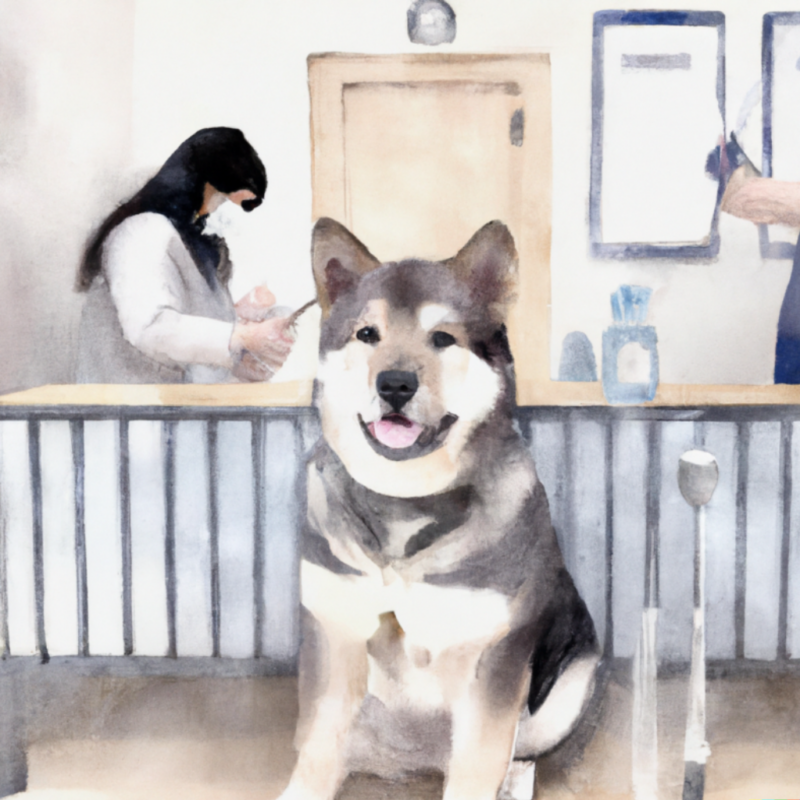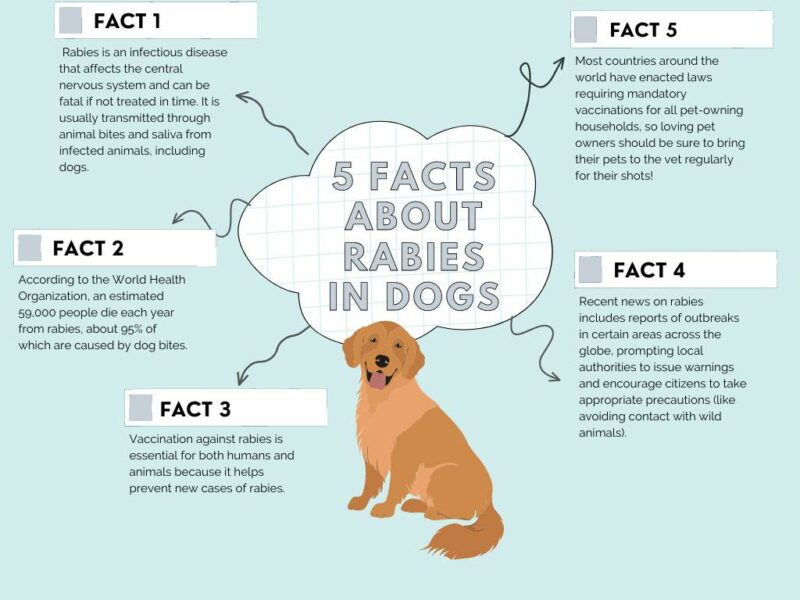The Recent News on Rabies
Introduction
During a typical walk around the neighborhood, Jessica and her beloved dog, Max, were enjoying the fresh air and the warm sun when an unexpected encounter with a stray animal left her shaken. Shortly after the incident, Max started to show strange symptoms that made Jessica worry about his health.
In many parts of the globe, rabies has become a growing concern. This illness is believed to kill more each year. Rabies is still a major public health issue in developed countries, despite the fact that most of these occurrences occur in developing countries.
The WHO estimates rabies costs in developing countries exceed $3 billion annually. This estimate does not include costs associated with lost productivity and medical expenses incurred by survivors.
The WHO recommends that governments develop national plans to control rabies. Such plans must include surveillance systems, education programs, vaccination campaigns, and post-exposure prophylaxis.
Here is some latest news about rabies:
Oral Rabies Vaccine: a new way to fighting rabies death

According to estimates by the World Health Organization, Rabies kills nearly 55,000 people every year worldwide. Most cases occur in developing countries where access to medical care is limited. Oral rabies vaccination (ORV) is one way to prevent dog bites and save lives. This method is used in several countries, including India, China, Thailand, and Mexico. But it’s not always easy to convince owners to give up shots for a few days. So how do you ensure they don’t miss out on getting vaccinated?
Injecting the rabies vaccine requires training, equipment, and facilities. Plus, it causes pain and inflammation, making it harder for dogs to return for booster doses. Oral rabies vaccines are much simpler to use. They contain three components: an oil base containing antigens, a sugar coating, and a sweetener. Dogs eat the mixture without having to be restrained. After 10 minutes, they spit out the coated antigen. If dogs eat enough, they develop antibodies that protect them from rabies.
The most common side effects include vomiting, diarrhea, and stomach upset. These symptoms usually disappear within 24 hours. However, some dogs develop allergic reactions such as skin rash, itching, hives, and swelling around the mouth. Other rare side effects include seizures and death.
WHO and the Office International des Epizooties (OIE), the international organization responsible for animal health, support the effective and safe use of oral rabies vaccines, especially in regions with many stray dogs.
Improving the Use of Rabies Oral Vaccines
The World Health Organization (WHO), the Office of International des Epizooties (OIE), and the Food and Agriculture Organization (FAO) published guidelines in 2017 that aim to help countries develop and implement national plans for the use of oral rabies vaccination (ORV). These recommendations include safety evaluations, prequalification processes, licensing procedures, post-licensing surveillance and monitoring, and training requirements. They also highlight the importance of ensuring that all countries have access to and affordable supplies of ORVs.
A recent study found that ORVs were used in over half of the countries surveyed. However, there is still room for improvement. For example, some countries require that dogs be vaccinated every six months, while others do not. In addition, many countries need more resources to support ORV programs.
In response to these concerns, WHO, OIE, and FAO recently launched a global consultation to discuss strengthening ORV strategies’ implementation. This includes reviewing the current status of ORV programs worldwide; identifying gaps in knowledge, capacity, and infrastructure; and developing practical solutions to address these issues.
Facts About Rabies

5 Rabies Deaths in the United States Last Year
The number of people dying from rabies in the US increased by 14% over 2016, according to data published Monday by the Centers for Disease Control and Prevention (CDC). In 2017, the disease caused five fatalities, compared to four in 2016. All those victims lived in the western part of the country, with fewer cases overall.
In 2017, there were 7,936 reported human rabies cases in the US, up 3% from 2016. Of those, 2,879 patients died. This represents the highest annual death toll since 2007 when 9,723 Americans lost their lives to the virus. Most of the cases occurred in the West, while the Northeast continued to see a decline in numbers.
Rabies is transmitted via saliva from infected mammals. Once inside the body, it attacks the brain and nervous system, causing symptoms such as fever, headache, nausea, vomiting, and difficulty swallowing. If left untreated, it can lead to paralysis and death.
There is a vaccine available for humans, and it works well. However, it must be administered within days of exposure. Afterward, the person is still vulnerable to infection.
People should always wear protective clothing whenever handling wildlife, especially bats. Bats carry the deadly virus, although they rarely bite people. Instead, they use their teeth to pierce the skin and inject saliva into the wound.
Contact local authorities immediately if you find a bat in your home or car. They can capture the animal and take it to a veterinarian for testing.
Safe and Effective Immune Response From a Rabies Vaccine
A team of researchers led by Dr. Anthony S. Fauci, director of NIAID, reports that a new rabies vaccine candidate performed well in humans during a Phase I clinical trial. In addition, the vaccine was found to be safe and well-tolerated. These findings are reported today in the journal PLOS Pathogens.
The vaccine is based on a modified adenovirus type 5 (ChAdOx1). While it is unknown whether this particular adenovirus strain will cause disease in people, previous studies suggest that it is unlikely to do so.
In the current study, researchers administered one dose of either the ChAdOx1 Rab G vaccine or a placebo to healthy adults. They measured the participants’ blood samples over several weeks to determine how much antibody was produced against the rabies virus. The results showed that the vaccine induced a robust immune response in most volunteers.

“This is very encouraging news,” says Dr. Fauci. “We now know that we can safely use this vaccine as part of our strategy to develop a safe and effective rabies vaccine.”
Dr. Fauci adds that he hopes these positive results will lead future work to evaluate the vaccine in animals and eventually in people infected with other deadly viruses such as Ebola and Zika.
A Stray Cat Had Been Infected with Rabies in New Castle County.
Officials say the stray cat has been infected by rabies and had been living outdoors since January 2018. They are urging people to keep their pets inside and to contact local veterinarians if they see animals acting strangely. A spokesperson says the case highlights the importance of keeping pets indoors during cold weather.
People should avoid touching animals — even domesticated ones like dogs and cats — if they don’t know what type of animal they are. If you do feel an animal, wash your hands immediately afterward. Also, clean up any messes around your house, mainly if you feed your pet outside. Finally, consider vaccinating livestock and horses against rabies.
Keep your garbage securely covered. And remember: You never know what might be lurking around next door.
Rabies Risk is Not Worth It Based on Experts
Rabies is a deadly disease caused by a virus carried by wild animals such as bats, skunks, foxes, raccoons, coyotes, and domestic dogs. People can become infected by being bitten by an infected animal, usually during contact with saliva or open wounds. In rare cases, humans contract the disease from eating undercooked meat from an infected animal. Symptoms include fever, headache, nausea, vomiting, muscle pain, difficulty breathing, and paralysis. If left untreated, death occurs within days.
There are several types of vaccines available to protect against rabies. These include the human diploid cell vaccine (HDCV), purified chick embryo cell vaccine, and recombinant DNA vaccine. HDCV is a live attenuated virus vaccine, meaning it contains weakened viruses. This vaccine cannot cause rabies infection but stimulates the immune system to produce antibodies. Purified chick embryo cell vaccine is derived from cells taken from eggs. Finally, a recombinant DNA vaccine is made using genetic engineering techniques to insert genes into bacteria. All three types of vaccines stimulate immunity.
The Advisory Committee on Immunization Practices recommends routine immunizations for children and adults. Children ages nine months to 18 should receive two doses of the oral rabies vaccine, while those 19 and older should receive three doses. Adults should receive either 2 or 3 doses, depending on their age.
While most people recover fully from the disease, some experience serious health problems, including brain damage and death; for example, one study found that about 10% of patients who received HDCVs developed encephalitis, a potentially fatal inflammation of the brain. Another study found that 5% of recipients had severe reactions like Guillain-Barré syndrome, a neurological disorder characterized by weakness and numb arms and legs.
Frequently Asked Questions
Disclaimer: The information provided on this veterinary website is intended for general educational purposes only and should not be considered as a substitute for professional veterinary advice, diagnosis, or treatment. Always consult a licensed veterinarian for any concerns or questions regarding the health and well-being of your pet. This website does not claim to cover every possible situation or provide exhaustive knowledge on the subjects presented. The owners and contributors of this website are not responsible for any harm or loss that may result from the use or misuse of the information provided herein.







